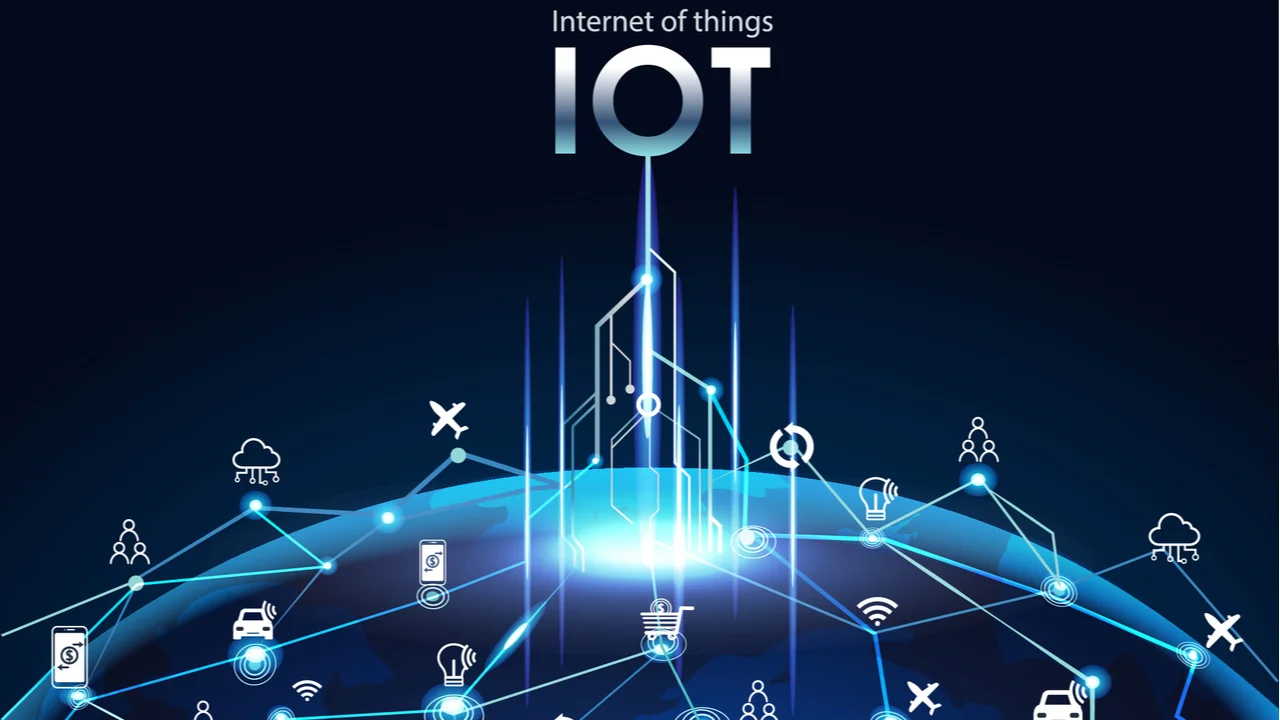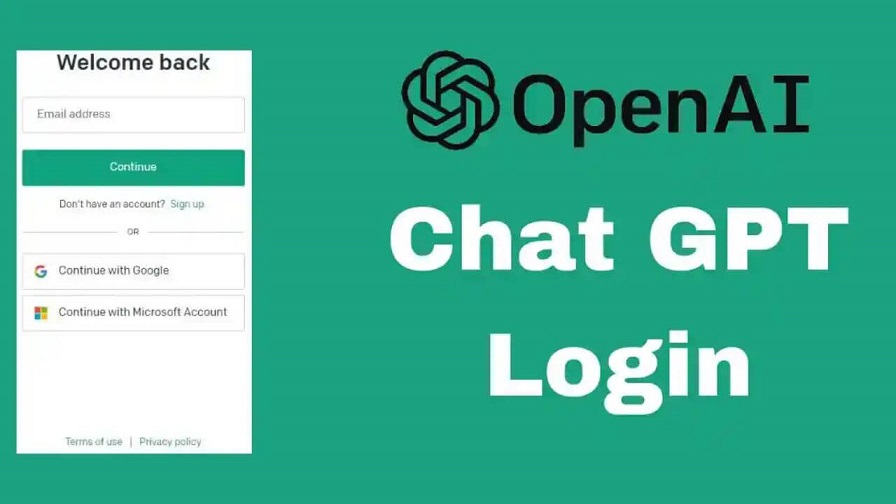Discover everything you need to know about the Internet of Things (IoT) and its ecosystem of devices. Learn about the concept, how it works, and the various applications in consumer and enterprise settings.
Explore the benefits of IoT, such as enhanced convenience, automation, and energy efficiency. Delve into the security and privacy concerns surrounding IoT and discover best practices to safeguard your data. Stay informed about the latest trends and developments in this rapidly evolving field.
Start your journey into the fascinating world of IoT and unlock its potential for a connected and smarter future.
What is Internet of Things?
The concept behind IoT is to enable these objects to communicate with each other and with the internet, creating a network of interconnected devices. This connectivity allows for the seamless exchange of data, enabling real-time monitoring, control, and automation of various processes.
IoT devices collect data through their sensors or interact with the environment through actuators. The collected data can be shared over the internet or processed locally to derive insights, make informed decisions, and trigger actions.
The applications of IoT are vast and span across industries such as healthcare, transportation, agriculture, manufacturing, energy, and smart cities. Examples of IoT in action include smart homes with connected appliances, wearable fitness trackers, autonomous vehicles, remote monitoring of industrial equipment, and smart grids for energy management.
Key technologies that enable the functioning of IoT include wireless communication protocols, cloud computing, big data analytics, and artificial intelligence. Security and privacy considerations are critical in IoT implementations to protect sensitive data and ensure the integrity and reliability of the connected devices.
How Does Internet of Things (IoT) Works
Devices and Sensors: IoT devices are embedded with sensors that can collect various types of data, such as temperature, humidity, motion, location, or light intensity. These devices can range from everyday objects like thermostats or wearables to industrial machinery or vehicles.
Connectivity: IoT devices are connected to the internet, enabling them to communicate with each other and exchange data. They use various connectivity technologies like Wi-Fi, Bluetooth, cellular networks, or Low-Power Wide-Area Networks (LPWAN) to establish the connection.
Data Transmission: The collected data from IoT devices is transmitted to a central location or cloud platform. This can happen directly from the device or through a gateway device that aggregates data from multiple devices before sending it to the cloud.
Cloud Computing: IoT data is typically processed and stored in the cloud. Cloud platforms provide the infrastructure and services needed to handle the large volume of data generated by IoT devices. This includes storage, computing power, data analytics, and machine learning capabilities.
Data Processing and Analysis: Once the data is in the cloud, it can be processed and analyzed using various techniques. This may involve real-time processing to trigger immediate actions or batch processing for historical analysis and insights. Data analytics algorithms can derive meaningful information, identify patterns, detect anomalies, or make predictions based on the collected data.
Actions and Decision-Making: The processed data can be used to trigger actions or make informed decisions. This can involve sending commands back to the IoT devices to perform certain actions, such as adjusting the temperature, turning on/off lights, or sending alerts or notifications to users based on specific conditions or events.
User Interaction: IoT systems often provide interfaces, such as mobile apps or web dashboards, for users to interact with and control their devices remotely. Users can monitor and manage their IoT devices, receive notifications, and customize settings through these interfaces.
The Emergence of IoT?
The history of the Internet of Things (IoT) can be traced back several decades, with significant milestones and developments along the way.
1960s-1980s: The concept of connecting devices and enabling machine-to-machine communication emerges. The Massachusetts Institute of Technology (MIT) introduces the concept of “Things That Think,” exploring the idea of embedding intelligence into everyday objects.
1990s: The term “Internet of Things” is coined by Kevin Ashton, a British technology pioneer, during his work at Procter & Gamble. Ashton describes it as a system where physical objects are connected to the internet and can communicate and interact with each other.
1999: The Auto-ID Center is founded at MIT to explore and develop technologies for RFID (Radio Frequency Identification) and sensor networks, which are fundamental to IoT connectivity.
2000s: Advancements in wireless technologies, sensors, and connectivity pave the way for the practical implementation of IoT. The cost of sensors and processors decreases, making it more feasible to embed them into various devices.
2008: The number of connected devices exceeds the number of people on Earth, marking a significant milestone in the growth of IoT.
2010s: IoT gains momentum, with increased adoption in various industries and sectors. The number of connected devices continues to grow exponentially.
2013: The term “Industrial Internet” is introduced by General Electric (GE) to describe the integration of IoT technologies in industrial applications, giving rise to the concept of Industrial IoT (IIoT).
2014: Google acquires Nest Labs, a company focused on smart home devices, including thermostats and smoke detectors. This acquisition brings IoT technology into the mainstream consumer market.
2016: The Mirai botnet attack occurs, highlighting the security vulnerabilities of poorly secured IoT devices. This incident leads to increased awareness and efforts to enhance IoT security.
2017: The number of IoT devices worldwide reaches billions, signifying the widespread adoption of IoT in various domains, including healthcare, agriculture, transportation, and smart cities.
Present: IoT continues to evolve, driven by advancements in connectivity, artificial intelligence, cloud computing, and edge computing. The proliferation of 5G networks promises to further accelerate the growth and capabilities of IoT.
IoT Devices Example
Example of IoT Devices

Smart Home Devices
Devices like smart thermostats, smart lighting systems, smart locks, smart security cameras, and smart appliances that can be controlled and monitored remotely.
Wearable Devices
Devices such as fitness trackers, smartwatches, and health monitoring devices that collect personal health and activity data.
Industrial IoT Devices | Industrial Sensors
Sensors used in manufacturing plants and industrial settings to monitor and control equipment, track inventory, and optimize production processes.
Connected IoT Devices | Connected Vehicles
Cars, trucks, and other vehicles equipped with sensors and connectivity features that enable real-time tracking, diagnostics, and navigation services.
Environmental Monitoring Devices
Sensors and devices used for monitoring air quality, water quality, weather conditions, and energy consumption in smart cities and environmental applications.
Healthcare Devices
Medical devices like remote patient monitoring systems, smart insulin pumps, connected health monitors, and assistive devices for elderly care.
Agriculture Sensors
IoT devices used in precision agriculture to monitor soil moisture, temperature, humidity, and crop health, enabling efficient irrigation and optimal resource management.
Smart Appliances
Household appliances like refrigerators, washing machines, and ovens that can connect to the internet for remote control, energy optimization, and automation.
Intelligent Retail Systems
IoT devices used in retail environments for inventory management, smart shelves, customer tracking, and personalized marketing.
Smart Grid Devices
Devices used in power grids for real-time monitoring, load balancing, and optimizing energy distribution and consumption.
Most Popular IoT Devices
Smart Speakers
Smart speakers like Amazon Echo (with Alexa), Google Home (with Google Assistant), and Apple HomePod (with Siri) are widely used IoT devices. They offer voice-controlled assistance, music streaming, smart home integration, and access to various services and information.
Smart Thermostats
Smart thermostats, such as the Nest Thermostat and ecobee, are popular IoT devices for home energy management. They learn user preferences, adjust temperatures, and enable remote control through smartphone apps, resulting in energy savings and increased comfort.
Wearable Devices
Wearable IoT devices, including smartwatches, fitness trackers, and health monitors, have gained significant popularity. They track fitness activities, monitor heart rate and sleep patterns, deliver notifications, and provide personalized health insights.
Smart Home Security Systems
IoT-based home security systems like Ring Video Doorbell, Arlo, and SimpliSafe have become increasingly popular. These devices offer remote monitoring, video surveillance, motion detection, and smartphone notifications for enhanced home security.
Smart Locks
Smart locks, such as August Smart Lock and Yale Assure Lock, smart video doorbell provide keyless entry and remote access control. They allow users to lock and unlock doors using smartphones or voice commands, offering convenience and improved security.
Connected Cameras
IoT-enabled cameras like Arlo, Nest Cam, and Wyze Cam offer remote monitoring, live streaming, and motion detection. These devices enhance home security, enable surveillance, and provide peace of mind.
Connected Appliances
IoT is transforming traditional appliances into smart devices. Smart refrigerators, ovens, washing machines, and other appliances offer features such as remote control, energy optimization, and personalized settings.
Connected Lighting
Smart lighting systems like Philips Hue, LIFX, and TP-Link Kasa allow users to control and automate lighting through smartphone apps or voice commands. They offer features like dimming, color customization, and scheduling for energy efficiency and ambiance.
Connected Health Devices
IoT devices in the healthcare sector include smart scales, blood pressure monitors, glucose meters, and medication dispensers. These devices help individuals monitor their health conditions, track vital signs, and manage medications.
Connected Cars
IoT is driving innovations in the automotive industry with connected car technologies. These devices provide features such as GPS navigation, real-time traffic updates, vehicle diagnostics, and remote control functionalities.
Benefit of IoT in the Ecosystem
Improved Efficiency and Productivity: IoT enables automation and optimization of processes, leading to increased efficiency and productivity. Connected devices can gather real-time data, analyze it, and make informed decisions or trigger actions without human intervention.
Cost Savings: IoT can help reduce operational costs by optimizing resource utilization, improving maintenance schedules, and minimizing energy consumption. For example, smart energy management systems can monitor and adjust energy usage in buildings, resulting in cost savings.
Enhanced Safety and Security: IoT devices can enhance safety and security in various contexts. Smart home security systems, for instance, offer real-time monitoring, remote access, and alerts in case of suspicious activities. In industrial settings, IoT sensors can detect potential hazards and provide early warnings to prevent accidents.
Data-Driven Insights: IoT generates vast amounts of data that can be analyzed to gain valuable insights. Organizations can leverage this data to make informed decisions, identify patterns, predict maintenance needs, optimize processes, and improve overall performance.
Improved Quality of Life: IoT applications in healthcare, smart homes, and assisted living technologies can enhance the quality of life for individuals. Remote patient monitoring, wearable health devices, and smart home automation can provide personalized care, promote wellness, and enable independent living for the elderly or individuals with disabilities.
Environmental Sustainability: IoT can contribute to environmental sustainability by enabling efficient resource management. Smart grid systems optimize energy distribution, smart agriculture systems conserve water and reduce chemical usage, and smart cities monitor and manage waste and energy consumption, leading to a greener and more sustainable future.
Real-Time Monitoring and Control: IoT devices enable real-time monitoring and control of various processes, assets, and environments. This capability is valuable in sectors such as manufacturing, logistics, and transportation, where real-time data can lead to proactive decision-making, predictive maintenance, and optimized operations.
Enhanced Customer Experience: IoT enables personalized and customized experiences for consumers. Connected devices can learn user preferences, provide tailored recommendations, and automate tasks to enhance convenience and satisfaction.
Connectivity and Collaboration: IoT fosters connectivity and collaboration among devices, systems, and stakeholders. It enables seamless communication and data sharing between different entities, leading to integrated solutions, improved coordination, and better overall outcomes.
Innovation and New Business Opportunities: IoT opens up new possibilities for innovation and business opportunities. Organizations can develop new IoT-enabled products and services, create new revenue streams, and drive digital transformation.
Pros and Cons of IoT Devices
Pros:
- Connectivity and Convenience: IoT devices enable seamless connectivity and remote control, allowing users to manage and monitor devices from anywhere, enhancing convenience and accessibility.
- Automation and Efficiency: IoT devices automate processes, optimize resource usage, and provide real-time data insights, leading to increased efficiency and productivity.
- Improved Safety and Security: IoT devices offer enhanced safety and security through features like remote monitoring, motion detection, and alerts, helping prevent accidents, thefts, or unauthorized access.
- Data-Driven Insights: IoT generates vast amounts of data, which can be analyzed to gain valuable insights, make informed decisions, and optimize operations in various domains.
- Energy Efficiency and Sustainability: IoT enables energy-saving measures by optimizing energy consumption in homes, buildings, and industrial settings, contributing to environmental sustainability.
- Enhanced User Experience: IoT devices offer personalized and tailored experiences, learning user preferences and adapting to individual needs, resulting in improved user satisfaction.
What are the Disadvantages of IoT Devices?
- Privacy and Security Risks: IoT devices collect and transmit data, raising concerns about data privacy, security breaches, and potential misuse of personal information.
- Compatibility and Interoperability Challenges: IoT devices from different manufacturers may use different communication protocols, leading to compatibility and interoperability issues, limiting seamless integration.
- Dependency on Internet Connectivity: IoT devices heavily rely on stable internet connectivity. Network outages or disruptions can impact their functionality and remote control capabilities.
- Complex Implementation and Maintenance: Setting up and maintaining IoT devices can be complex, requiring technical expertise, regular firmware updates, and troubleshooting.
- Cost Considerations: IoT devices may have a higher upfront cost compared to traditional devices, and additional expenses may be incurred for connectivity, subscriptions, or cloud services.
- Reliance on Cloud Infrastructure: IoT devices often rely on cloud-based platforms for data storage and processing, which may introduce latency, dependence on third-party services, and concerns about data ownership.
- Ethical and Legal Concerns: IoT devices raise ethical considerations related to data privacy, consent, algorithmic bias, and the responsible use of data. Legal frameworks and regulations are still evolving to address these concerns adequately.
Careers in IoT
IoT Developer
As an IoT developer, you design and develop software and applications for IoT devices and platforms. This involves programming, sensor integration, data analysis, and cloud connectivity.
IoT Solution Architect
As an IoT solution architect, you design and implement end-to-end IoT solutions. You analyze business requirements, select appropriate hardware and software components, and oversee the integration of IoT systems.
IoT Security Specialist
With the increasing security concerns in IoT, there is a growing demand for professionals who specialize in IoT security. They develop and implement security measures, conduct vulnerability assessments, and ensure the protection of IoT devices and data.
Data Scientist/Analyst
IoT generates vast amounts of data, and data scientists or analysts play a crucial role in extracting insights and patterns from this data. They apply machine learning and analytics techniques to derive valuable information for business decision-making.
IoT Project Manager
IoT projects require effective management to ensure successful implementation. IoT project managers oversee the planning, execution, and monitoring of IoT initiatives, ensuring they are delivered on time and within budget.
IoT Consultant
IoT consultants provide expert advice to organizations on leveraging IoT technologies. They assess business needs, recommend IoT solutions, and assist in implementation strategies to achieve specific goals and objectives.
IoT Engineer
IoT engineers focus on designing and building IoT hardware components and systems. They work on sensor integration, connectivity, firmware development, and optimization of IoT devices.
IoT Sales and Marketing Specialist
These professionals are responsible for promoting and selling IoT solutions and services. They understand market trends, identify potential customers, and effectively communicate the value of IoT technologies to drive sales.
IoT Data Privacy and Compliance Officer
With increasing privacy regulations, organizations need professionals who specialize in IoT data privacy and compliance. They ensure compliance with regulations, establish data privacy policies, and manage data governance.
Industrial IoT Specialist
Industrial IoT (IIoT) focuses on applying IoT technologies in industrial settings. IIoT specialists work on optimizing manufacturing processes, implementing predictive maintenance systems, and improving overall operational efficiency.
IoT Standards and Frameworks
Emerging IoT Standards:
- 6LoWPAN (IPv6 over Low-Power Wireless Personal Area Networks): This open standard, defined by the Internet Engineering Task Force (IETF), enables low-power radios such as 802.15.4, Bluetooth Low Energy (BLE), and Z-Wave to communicate with the internet. It facilitates seamless connectivity for various IoT devices.
- ZigBee: ZigBee is a low-power, low-data rate wireless network primarily used in industrial settings. Based on the IEEE 802.15.4 standard, ZigBee Alliance developed Dotdot, a universal language for IoT. Dotdot ensures secure interoperability and communication among smart objects on any network.
- LiteOS: LiteOS is a Unix-like operating system designed for wireless sensor networks. It supports applications in smartphones, wearables, smart homes, intelligent manufacturing, and the Internet of Vehicles (IoV). LiteOS serves as a development platform for smart devices.
- OneM2M: OneM2M is a machine-to-machine service layer embedded in software and hardware, connecting devices across different verticals. OneM2M, a global standardization body, aims to develop reusable standards that enable seamless IoT communication and interoperability.
- Data Distribution Service (DDS): DDS, developed by the Object Management Group (OMG), is an IoT standard for real-time, scalable, and high-performance machine-to-machine communication. It ensures efficient and reliable data exchange in IoT systems.
- Advanced Message Queuing Protocol (AMQP): AMQP is an open-source standard for asynchronous messaging. It enables encrypted and interoperable messaging between organizations and applications, serving as a communication protocol for IoT device management and client-server messaging.
- Constrained Application Protocol (CoAP): CoAP is an IETF protocol designed for low-power, compute-constrained devices in IoT. It enables efficient communication and resource-constrained operations in the context of the Internet of Things.
- Long Range Wide Area Network (LoRaWAN): LoRaWAN is a protocol designed for wide area networks, particularly suitable for massive IoT deployments like smart cities. It supports low-power, long-range communication for millions of devices.
IoT Frameworks:
- Amazon Web Services (AWS) IoT: AWS IoT is a cloud computing platform by Amazon that enables seamless connectivity and secure interaction between smart devices and the AWS cloud. It provides a range of services for IoT device management and data processing.
- Arm Mbed IoT: Arm Mbed IoT is a platform that facilitates application development for IoT devices based on Arm microcontrollers. It offers scalable, connected, and secure environments for IoT devices, integrating Mbed tools and services.
- Microsoft Azure IoT Suite: Azure IoT Suite is a comprehensive platform that includes various services for interacting with IoT devices, processing data, performing analysis, and visualizing insights. It empowers users to leverage their IoT data for business operations.
- Google Brillo/Weave: Brillo and Weave form a platform for rapid IoT application implementation. Brillo is an Android-based OS for low-power embedded devices, while Weave is an IoT communication protocol facilitating device-to-cloud and device-to-device interactions.
- Calvin: Calvin is an open-source IoT platform developed by Ericsson. It provides a framework for building and managing distributed applications, enabling seamless communication among devices. Calvin offers a development framework for application developers and a runtime environment for running applications.
Consumer and Enterprise IoT Applications
Consumer IoT Applications
- Smart Home Automation: Consumer IoT devices are commonly used for home automation. Examples include smart thermostats, smart lighting systems, smart security cameras, and smart appliances that offer convenience, energy savings, and enhanced security.
- Wearable Devices: Wearable IoT devices, such as smartwatches and fitness trackers, monitor health and fitness data, provide notifications, and track activities. They enable individuals to monitor their well-being and stay connected on the go.
- Connected Entertainment: IoT devices are integrated into entertainment systems, including smart TVs, streaming devices, and smart speakers. They allow users to control media content, adjust settings, and access streaming services through voice commands or mobile apps.
- Connected Cars: IoT technology is used in connected cars for various purposes, such as navigation, remote vehicle monitoring, vehicle diagnostics, and entertainment systems. It enables features like real-time traffic updates, voice control, and remote vehicle access.
- Smart Health and Wellness: Consumer IoT devices for health and wellness include smart scales, blood pressure monitors, sleep trackers, and medication reminders. These devices help individuals track and manage their health conditions, promote healthy habits, and provide personalized insights.
Enterprise IoT Applications
- Industrial Automation: IoT is used in industrial settings for automation, monitoring, and optimization. It enables remote monitoring and control of machinery, predictive maintenance, supply chain management, and improved operational efficiency.
- Smart Agriculture: IoT devices and sensors are deployed in agriculture to monitor soil moisture, temperature, humidity, and crop health. This information helps optimize irrigation, fertilization, and pest control, leading to increased yields and resource efficiency.
- Asset Tracking and Management: IoT devices are used for asset tracking and management in industries like logistics, transportation, and manufacturing. They provide real-time visibility of assets, optimize inventory management, and enable predictive maintenance.
- Energy Management: IoT is employed in energy management systems to monitor and control energy usage in buildings, factories, and utilities. It helps optimize energy consumption, detect anomalies, and promote energy efficiency practices.
- Smart Cities: IoT technologies are applied in creating smart cities by integrating various systems and services. This includes smart lighting, waste management, traffic management, public safety, and efficient use of resources to enhance the quality of life for residents.
- Healthcare Systems: IoT devices are utilized in healthcare for remote patient monitoring, medical asset tracking, inventory management, and patient health management. They facilitate telemedicine, personalized care, and improved operational efficiency in healthcare facilities.
Security for IoT Devices
Strong Authentication
Implement robust authentication mechanisms to ensure that only authorized users or devices can access the IoT device or its associated services. This can include password-based authentication, two-factor authentication, or biometric authentication.
Secure Communication: Encrypt the data transmitted between IoT devices, gateways, and cloud platforms to prevent unauthorized access or tampering. Protocols like Transport Layer Security (TLS) or Secure Shell (SSH) can be used to establish secure communication channels.
Regular Software Updates: Keep IoT device software and firmware up to date with the latest security patches and bug fixes. Regular updates help address known vulnerabilities and ensure that devices have the latest security enhancements.
Secure Configuration: Configure IoT devices with secure settings and disable unnecessary features or services that may introduce security risks. Default usernames and passwords should be changed, and strong, unique passwords should be used.
Secure Device Management: Implement secure management practices, such as secure protocols for remote access, device monitoring, and firmware updates. Use encryption and strong authentication for device management interfaces.
Access Control and Authorization: Implement access controls that limit user privileges and permissions based on roles or levels of authority. This ensures that only authorized individuals or devices can access sensitive functionality or data.
Data Encryption and Privacy: Encrypt sensitive data both at rest and in transit to protect it from unauthorized access. Additionally, consider data minimization techniques to collect and store only the necessary data, reducing the potential impact of a data breach.
Physical Security: Protect IoT devices physically by placing them in secure locations, restricting physical access, and ensuring tamper-proof packaging or enclosures. This helps prevent unauthorized individuals from physically compromising the devices.
Security Testing and Auditing: Perform regular security testing and audits of IoT devices to identify vulnerabilities and weaknesses. This can include vulnerability assessments, penetration testing, and code reviews to uncover potential security flaws.
User Awareness and Education: Educate users about IoT device security best practices, such as creating strong passwords, being cautious of suspicious emails or links, and regularly updating device software. Encourage users to be mindful of the security risks associated with IoT devices.







